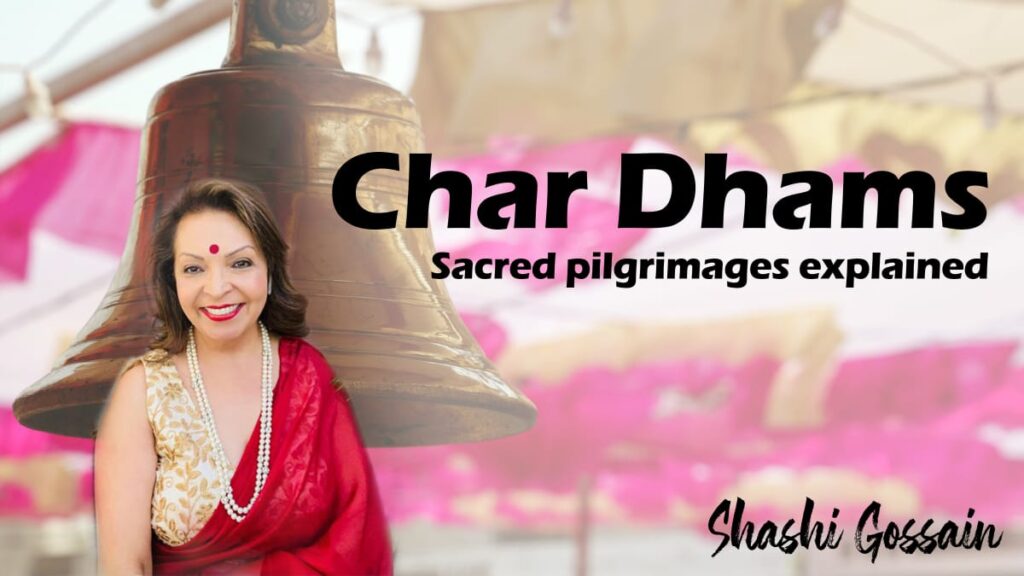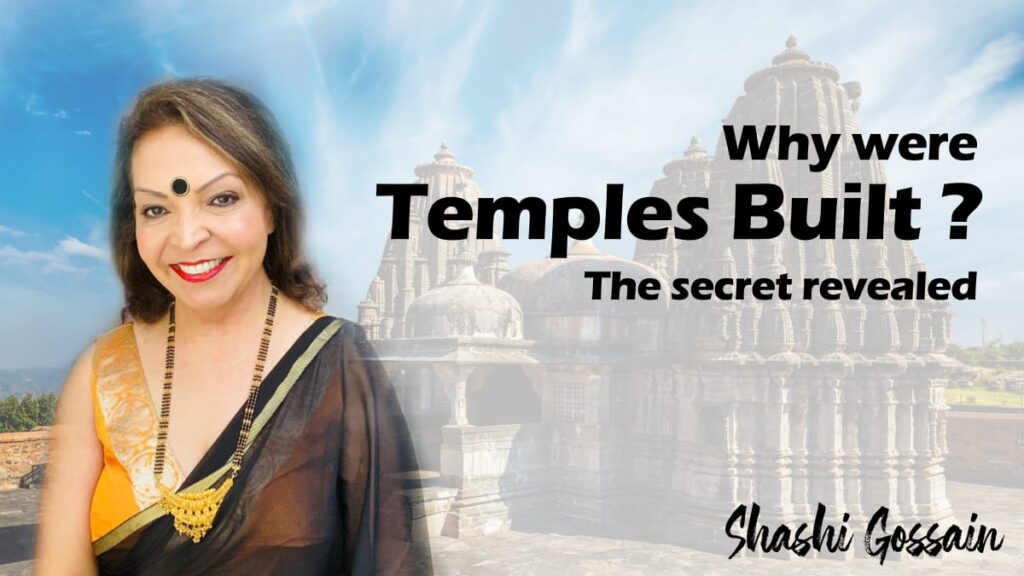The Char Dham (meaning: four abodes) is a set of four pilgrimage site in India, which Hindus believe that helps achieve moksha (salvation).
Each of the four pilgrimages (Char Dham) is a site of religious monuments and old temples, which have a special significance.
It’s every Hindu’s aim to visit these sites (Char Dham Yatra) at least once in their lifetime.
These Char Dhamas (Pilgrimages) located at prime points of the India are believed to have been liked by Lord Vishnu intimately. It is said that he takes his bath at Rameswaram(Tamilnadu), meditates at Badrinath(Uttarakhand), dines at Puri(Odisa) and retires at Dwarika(Gujarat).
The formation of the original Char Dham referred to as a pilgrimage circuit, is credited to great 8th century reformer and philosopher Shankaracharya (Adi Sankara).
In the original Char Dham, three of the four sites are Vaishnava (Puri, Dwarka and Badrinath) while one is Shaiva (Rameswaram).
BADRINATH: Badrinath Temple
Badrinath town is located in the state of Uttarakhand, in the Garhwal Hills, between Nar & Narayana mountain ranges, at nearly 6560m peak. It only remains open for pilgrims’ darshan from April to October each year.
According to Hindu belief, Badrinath became prominent when Nar-Narayan, an avatar of Vishnu, did Tapasya there, that’s penance through intense meditation.VAt that time that place was filled with berry trees.
In Sanskrit language, berries are called “badri”, so the place was named Badrika-Van, i.e. the forest of berries. The particular spot where the Nar-Narayan did Tapasya, a large berry tree formed, providing him protection from the elements.
Local people believe that Mata Lakshmi took the form of the berry tree to save Lord Narayan. Post-Tapasya, Narayan said, people will always take Her Name before His Name; hence Hindus always refer “Lakshmi-Narayan”. It was therefore called Badri-Nath, i.e. the Lord of Berry forest. This was called the first Dham.
RAMESHWARAM : Ramanatha swamy Temple
Rameswaram located in the South is in the Indian state of Tamil Nadu. It is situated in the Gulf of Mannar at the very tip of the Indian peninsula, about 40 km from Sri Lanka.
The second place, Rameswaram, got its importance when Lord Rama built a Shiva-Lingam here and worshiped it to get the blessings of Lord Shiva. The name Rameswaram means “God of Ram”.
Lord Rama, along with his brother Laxman and devotee Hanuman built a bridge (Rama Setu) to reach Sri Lanka to rescue his wife Sita who had been abducted earlier by Ravan, the ruler of Sri Lanka. Recent archaeological evidence confirmed that there indeed was a stone bridge.
It is believed that Rama (avatar of Vishnu), prayed to Shiv to ask for forgiveness for sins that he may have committed during his war against the demon-king Ravana in Sri Lanka. Rama built a lingam (symbol of Shiva) in his honour.
The Ramanatha Swamy Temple, dedicated to Lord Shiva occupies a major area of Rameswaram. The temple is believed to have been consecrated by Shri Rama Chandra. It contains 24 wells with holy waters, where Hindus have a ceremonial bath.
DWARKA: Dwarakadheesh Temple
Dwarka in the west is a city in the state of Gujarat, India which derives its name from the word “dvar” meaning ‘door’ or ‘gate’ in the Sanskrit language. The city lies in the westernmost part of India. It is located where the Gomti River merges into the Arabian Sea.
The legendary city of Dwarka was the dwelling place of Lord Krishna, after he left Mathura, which was his birthplace. It is believed Dwarkadhish temple was built by Krishna’s grandson. Archaeological findings suggest that the temple built 2500 years ago. However, it was destroyed by the muslim ruler in 1472, & subsequently built in 16th century.
It is believed that due to damage and destruction by the sea, Dwarka has submerged six times and modern day Dwarka is the 7th such city to be built in the area.
PURI: Jagannath Temple
Puri is located in the state of Odisha, India. It is one of the oldest cities in the eastern part of the country and is situated on the coast of the Bay of Bengal.
The main deity is Shri Krishna which is celebrated as Lord Jagannatha.
It is the only shrine in India, where goddess, Subhadra, sister of Lord Krishna is worshipped along with her brothers, Lord Jagannatha and Lord Balabhadra.
The main temple here is about 1000 years old and was constructed by
- Raja Choda Ganga Deva &
- Raja Tritiya Ananga Bhima Deva.
Puri is the site of the Govardhana Matha, one of the four cardinal institutions or Mathas established by Adi Shankaracharya.
This temple is famous for its annual Ratha Yatra or chariot festival, in which 3 principle deities, Jagannath, Balabhadra & are pulled on huge Temple Cars.
Veda and Char Dham
Each of this Maths (Char Dham) is dedicated to maintain posterity of one of four Vedas.
- Sharada Math (Dwarka)- Sama Veda
- Shringeri Math(Rameshwarm) – Yajur Veda
- Jyotir Math(Badrinath) – Atharva Veda
- Govardhan Math(Puri) – Rig Veda
The four Shankaracharya Peeth (Seats) at the Chaar Dham school of Hinduism, created at least four Hindu monastic institutions. He organized the Hindu practitioners under four Maṭhas institutions, with the headquarters at
- Dwarka in the West
- Jagannath Puri in the East
- Badrikashrama in the North
- Sringeri Shrada Peetham in the South
Chhota Char Dham
In Badri, there are 4 further Chota Char Dhams, on a hilly walking trail of over 4000m.
These are 4 temples nestled among the huge Himalayan mountain peaks, where Ganga, Yamuna, Vishnu, and the mighty Shiva exist in their purest incarnations. For a Hindu, it is the closest one can come to experiencing heavenly bliss.
The Char Dham Yatra refers to the journey up the mountains to these four sacred temples in the North Indian state of Uttarakhand. They are:
- Yamunotri, the source of River Yamuna, named after Goddess Yamuna. It’s believed a bath in this holy river cleanses of all sins. There are many hot water springs near the temple; Surya Kund is the most important among them. Devotees boil rice and potatoes in the kund and accept it as a Prasad of the Goddess.
- Gangotri: source of River Ganga , named after Goddess Ganga
- Kedarnath : known as the land of Shiva is at the highest peak, where a form of Lord Shiva is venerated as one of the twelve jyotirlinga
It is believed that originally the temple of Kedarnath was built by Pandavas. And Adi Shankaracharya got the present structure constructed in the 8th century adjacent to the old temple site. The grey stone structure is an architectural marvel because of its imposing design and its ability to survive for so many centuries in such a harsh terrain.
Pandavas were searching for Lord Shiva to absolve themselves from their sins committed at the battlefield of Mahabharata.
Lord Shiva did not want to forgive them so easily, so he converted himself into a bull and went to Garhwal side of Uttarakhand.
On being found by the Pandavas, he dived into the ground.
Different parts of the Lord came up at different parts:
- hump at Kedarnath
- arms at Tunganath
- navel at Madhya-Maheshwar
- face at Rudranath
- hair emerged at Kalpeshwar
Taken together, these five sites are known as Panch-kedar.
Pandavas got temples made at each of the five places.
We must visit these pilgrimage sites (Char Dham Yatra) once in our life. These famous and Important Hindu pilgrimages are believed to be the abodes of Hindu gods.



